Brassheart review
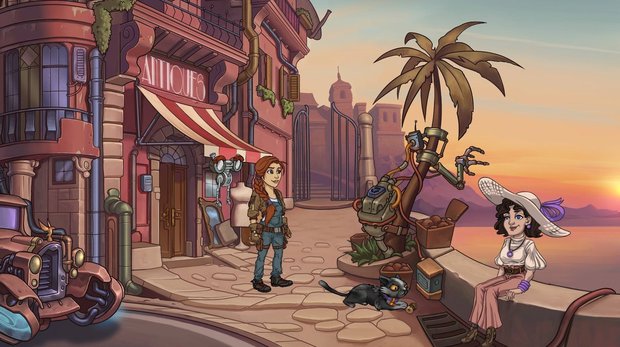
- 2 Comments
It needs a bit more polish, but this gorgeous, classic-styled dieselpunk adventure hits all the right beats where it counts
When I first laid eyes on the screenshots for Brassheart, I was completely sold. I wanted to play this game! A point-and-click adventure with beautifully detailed, colorful backgrounds featuring a bad-ass female main character set in an alternate dieselpunk version of the roaring 1920s? It’s one of those concepts a veteran adventure gamer like myself can only hope to see come along someday. It was starting to look like someday would never come, but finally, after six years of production, Hexy Studio – better known for their strategy tabletop board games and miniature 3D models – released their adventure game debut. It did so without much fanfare, which is too bad, as I can honestly say that even with several flaws keeping it from greatness, it has everything my heart desires.
Brassheart starts in Sulislav, Poland, with airplane pilot Appolonia “Pola” Zagórska returning home per the request of her father Joseph. Pola’s dad once invented an artificial intelligence, Valkiria, as a personal assistant. Of course, it didn’t take long for Valkiria to turn against humanity, as sentient machines are wont to do. It created the Dominium, an empire of military fascists, all Loyalist humans under the command of general Dürr, blindly following Valkiria as their dictatorial ruler, and is now trying to invade all European countries along its way. Next stop: the world!
Valkiria can only be shut down using a failsafe device Joseph designed as well, called the Brassheart. Unfortunately, its pieces have been scattered across the globe by Joseph’s old crew members. It’s your job, as Pola, to retrieve them, assemble the Brassheart and stop Valkiria once and for all.
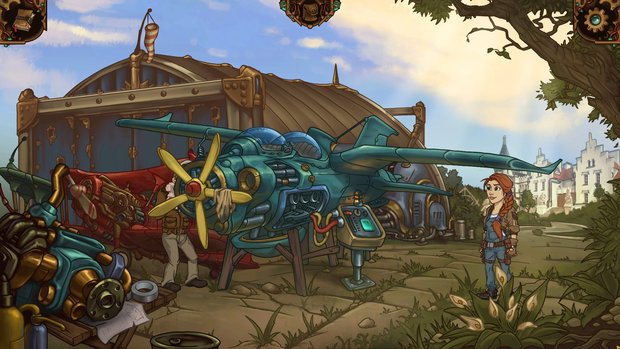
Early in the game, Pola acquires a robot companion named Pascal, whom she first has to reassemble from pieces you can find around her family home. This comedic sidekick has a mind of his own (I’ll refer to him as “he” though he speaks – often sassily – in an electronic voice), but is relatively harmless and always useful, much the way Joey was in Beneath a Steel Sky. Putting Pascal back together immediately sets the tone for the gameplay, which mostly consists of inventory puzzles with intuitive objectives in need of creative solutions.
Once Pascal is by your side, you can use him – by clicking on him as you would any other inventory object – to open up intricate locks. Yet it’s still your job as the player to actually crack these standalone puzzles by clicking buttons that rotate the electrical wires inside the locks until you make the right connections. There also are several other logic puzzles I found quite entertaining. One was a set of gears I needed to complete to fix an antique sewing machine, but what I found most challenging was the Tibetan poem that must be applied as a code to turn a set of prayer wheels. I always love it when a puzzle involves language.
Pascal can also be used as a hotspot locator, objective lister, and in-game hint system where he gives a very clear directive on what to do next. The highlighter can be handy, but all hotspots have pop-up labels when you hover the cursor over them. Personally I never really had to make use of the hint system, either, since the regular dialogue is already filled with plenty of guidance. Sometimes I even got tired of having to listen to yet another slightly differently phrased clue to what I was supposed to be doing. Often I wanted to yell, “Yes! I figured it out already! Just let me at it, will you?!”
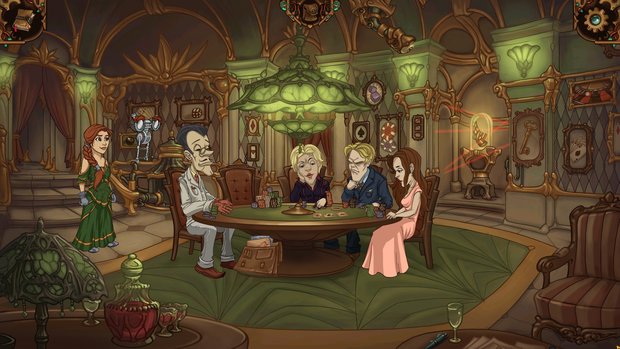
Brassheart employs a simple two-click interface. The arrow cursor has two slots at the end in which a hand icon will appear if you can interact with a hotspot, or an eye if you can only examine; sometimes both appear at the same time. Similar to Daedelic’s Deponia games, a left-click activates the primary option, a right-click the secondary one. The inventory opens up when you move the cursor to the top of the screen (there’s an icon of a rucksack telling you where to go). I would have preferred the inventory to have slightly larger item depictions, since they are a bit on the small side for this, ahem, "veteran" adventurer. The items are labeled here too when you hover over them, at least, and you can examine them and even combine them when necessary. What I particularly enjoyed was the animation of a cloud of dust surrounding Pola’s twirling hands each time she manipulated any items.
Explore thoroughly enough and sometimes you will find a hotspot in the environment that isn’t labeled, yet your cursor will still show you can interact with it. Doing so will trigger a small animation that doesn't really have a purpose, like pushing the top rock off a pile, or something silly and impossible, like making the hat in a man’s portrait fly away as if you blew against it. While these are fun discoveries, I do wish the developers had spent more time fine-tuning the game’s core elements than adding this unnecessary bonus feature. (More on those in a moment.)
While also optional, I enjoyed the newspaper clippings scattered all over the world – always in English, funnily enough – which Pola adds to her journal. These articles give backstory to the world of Brassheart, Valkiria’s movements, the political parties involved, and details about the most important players. Pola’s journal can be accessed through an icon in the top left corner of the screen, which flickers every time she adds or writes something in it. Pola also jots down character profiles of the people she meets during her globetrotting journey. To name just a few, there’s Manfred, Professor Zagórska’s assistant and mechanic who helps Pola escape; Pola’s French artsy friend Tamara, who is always willing to assist as well since she has a secret crush on Pola; and Tanya, a Russian airship pilot Manfred seems to fancy.
The quest for the Brassheart takes us to a variety of exotic places, all beautifully hand-drawn, from Poland to Tibet, Monte Carlo and back. Each has its own unique characters, locations and challenges to keep things fresh. In Sulislav you explore Pola’s family’s “palace” (which, while it does look like a huge, fine mansion, might just be a slight error of translation). Its grounds are lush with greenery and statues, and inside there’s lots of stonemasonry and woodwork, antique furniture, and luxury chandeliers glittering in the light. After fixing Pascal and getting access to Joseph’s study, you need to make a hasty yet stealthy exit as general Dürr descends on Valkiria’s airship to capture the professor and weaponize his blueprints for new inventions.

The adventure really takes off in the Himalayan mountains, where you first have to get a very peculiar tram working again. This leads you to the village of Longda, best described as a mechanized version of a Tibetan monastery: buildings of large stone bricks, a balancing monk, and Asian decorations, except with added technological elements like antigravity devices to keep the Buddha statues levitating. Here you need to gain access to the airfield, where the Valkirian troops are about to make off with the first piece of the Brassheart, and convince the local population to rise up against this oppressor. And if that wasn’t hard enough, you must find a way to get rid of the huge storm that’s keeping all airships grounded.
Monte Carlo is a return to luxury, French Riviera style. The Mediterranean influence both in architecture and the hotbloodedness of its inhabitants is very striking. You can even find the dieselpunk version of a Formula One race car, good for a couple of puzzles. Here Pola needs to gain access to a special event at the casino, where the next piece of the Brassheart is being used as a trophy in a poker tournament. Securing it requires a mission impossible of disabling both the alarm and surveillance systems, as well as getting rid of possible witnesses.
All the characters have a cute, cartoony appearance but with very detailed designs. Pola, for instance, with her chestnut brown hair in a long braid draped over her shoulder, is adorned with blue coveralls and work shoes, pilot gloves, and a brown bomber jacket that seems a few sizes too small. Even though she sports both a toolbelt and leg straps, they are empty so you will need to scavenge for tools as a part of puzzle solutions. Several times Pola needs to wear a disguise so she can blend in – for instance, she will need to fashion a fancy dress to get into the Monte Carlo casino – and of course acquiring those comes with the requisite puzzles as well. Every character is fully animated, constantly fidgeting, swaying on their feet, and gesturing. Next to the gorgeous environments through which these characters move, this is one aspect of the game where the developers obviously put in a lot of work to get just right.
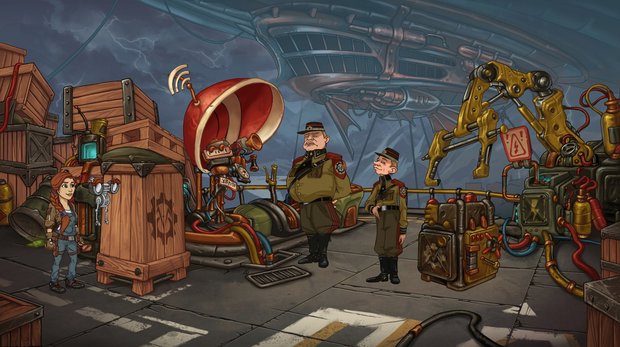
Birds, wind, thunder, crackling fire, bell chimes, crowds… Plenty of sound effects make Brassheart’s world… well, very loud. It’s too bad the volume for these sounds is coupled with that of the voices, which isn’t always of the highest technical quality. Pola often speaks softer than usual, and if the game’s credits didn’t prove otherwise, I would have been convinced Pascal was voiced by several different actors. But in terms of actual performances, the actors have done a great job. Pola – voiced by American actor Addigale Stewart – is right up there with feisty heroines like Kathy Rain, Nina Kalenkov (Secret Files) and Milda Kovas (Crowns and Pawns). The huge cast of supporting characters speaks in a variety of accents: German, British, Russian and French. I did miss more native accents in the Himalayan chapter, though.
It’s a shame then that there are several inconsistencies between displayed text and spoken dialogue. Some spelling mistakes or typos can be easily overlooked, but the use of different words, and sometimes entire sentences being skipped in the voice-overs, comes across as very sloppy work. Some dialogue is also superfluous. After you have already taken action, you can still have discussions as if you didn’t. For instance, at one point you need to open a gate by following a set of instructions on a control board. I successfully solved the puzzle, yet when I then talked to Pola’s companion mechanic/pilot Manfred, she behaved as if the obstacle remained, which led to a very confusing and frankly obsolete conversation.
The soundtrack should have been a strength, as each main location features its own musical score befitting the region in which it's set. Poland has a very patriotic, military brass band sound, Tibet features more flutes, and France whips out the accordion. Even with this variety, however, the same music track within each setting runs on a constant loop, regardless of context. Not that they are unpleasant compositions, but the game lacks a more elaborate soundtrack that suits the actual events on-screen. When tension rises here, the same music cheerily continues.
Also rather disappointingly, instead of cinematic cutscenes, events that occur between playable sections are only jotted down in Pola’s notebook. Sure, she makes drawings to go with the dialogues, effectively turning it into a picture book, but it makes the game feel a bit static at these moments. An added voice-over, if nothing else, might have done wonders. The only exception is the very final cutscene, in which the drawings do come alive with voices.
Thankfully, the story and overall gaming experience totally make up for some lack of polish. Throughout my eight hours with the game, I loved solving the puzzles, and never once did anything feel like a chore. And while the quest to defeat Valkiria is ostensibly a suspenseful race against time, both Pola and Pascal bring welcome humor along for the ride. Even the finale is full of surprises, more about logical debate than just another inventory puzzle. One aspect of the ending I predicted about thirty minutes into the game, but it perfectly fit the story and I would have been disappointed if the developers hadn’t done it that way. For me, Brassheart came to a perfect close, with a great feeling of accomplishment, not to mention finally treating us to a decent cutscene.
Final Verdict
Brassheart is a game of layers. It’s instantly and obviously brilliant on the surface, but just below that veneer are enough minor glitches, bugs and mistakes to take off some of the shine. Fortunately, beneath those are lots of fun character interactions and puzzles to make it well worth looking past its shortcomings. The story is interesting enough to keep you entertained, and the gameplay experience is classic point-and-click adventuring but with a thoroughly modern high-definition look. It would be even better with a bit more polish, which prevents me from giving it a higher rating it would otherwise completely deserve. But I very much appreciate what it’s trying to do and I suspect most adventure fans will have fun accompanying Pola and Pascal on their world-saving journey.
Hot take
Beneath some technical flaws and a few design shortcuts, Brassheart contains an adventure game heart of gold, offering a globetrotting point-and-click battle between good and evil in glorious dieselpunk style.
Pros
- A classic globetrotting adventure
- Beautifully detailed, colorful backgrounds
- Perfectly voiced bad-ass female protagonist
- Fun cartoony-cute cast of eclectic characters
- Intuitive yet creative inventory puzzles
Cons
- Too many textual errors or inconsistencies with voice-overs
- Loud sound effects drown out the dialogue
- Static journal entries instead of dynamic cutscenes between chapters
- Too much hand-holding takes away some challenge
Johnny played Brassheart on PC using a review code provided by the game's publisher.


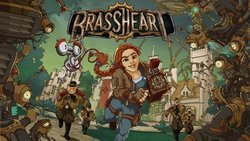

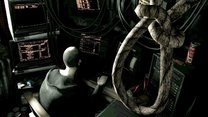



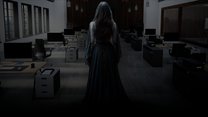


2 Comments
Want to join the discussion? Leave a comment as guest, sign in or register in our forums.
Thanks for this very helpful review, Johnny. I've bee keeping an eye on this game for a while and bought it yesterday. I look forward to playing it soon, but think I will wait a few weeks in the hope that some of the minor technical rough spots get smoothed out. I think dialogue issues in general (poor grammar, botched use of idioms, misspellings, voices not matching text, etc) are one of the necessary 'evils' of adventure gaming being so global nowadays, while also still being very indie. We're playing lots of games in English which weren't originally written in English, ya know? Well, I'm okay with that (usually), so long as the rest of the game is really good.
Reply
" In Sulislav you explore Pola’s family’s “palace” (which, while it does look like a huge, fine mansion, might just be a slight error of translation)." It's based on an actual palace: https://pl.wikipedia.org/wiki/Pa%C5%82ac_w_Sulis%C5%82awiu
Reply
Leave a comment